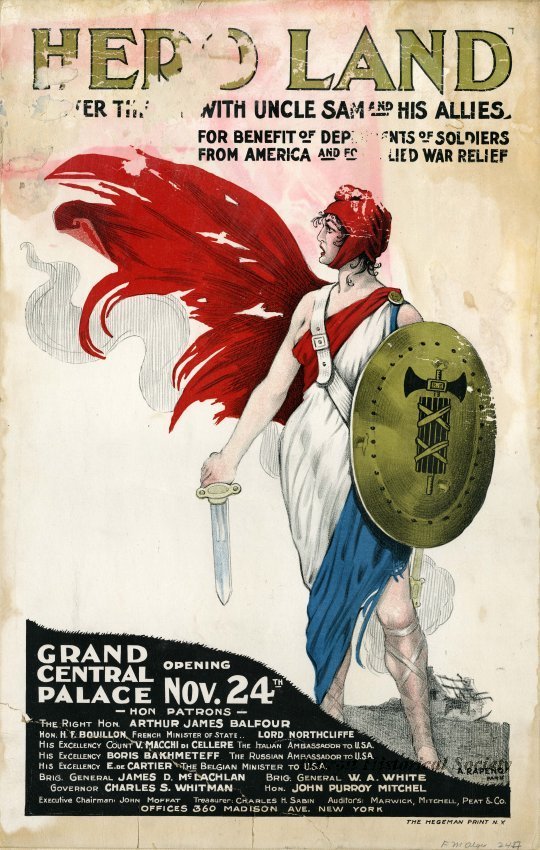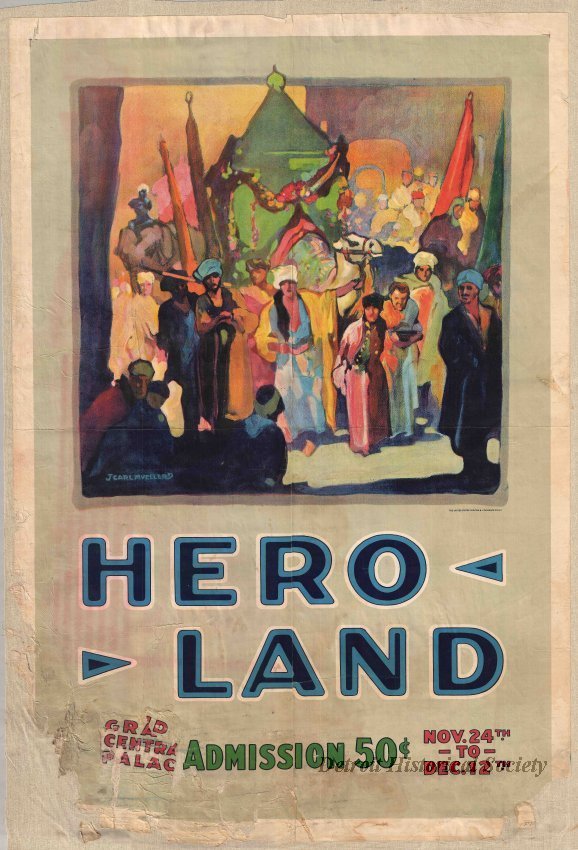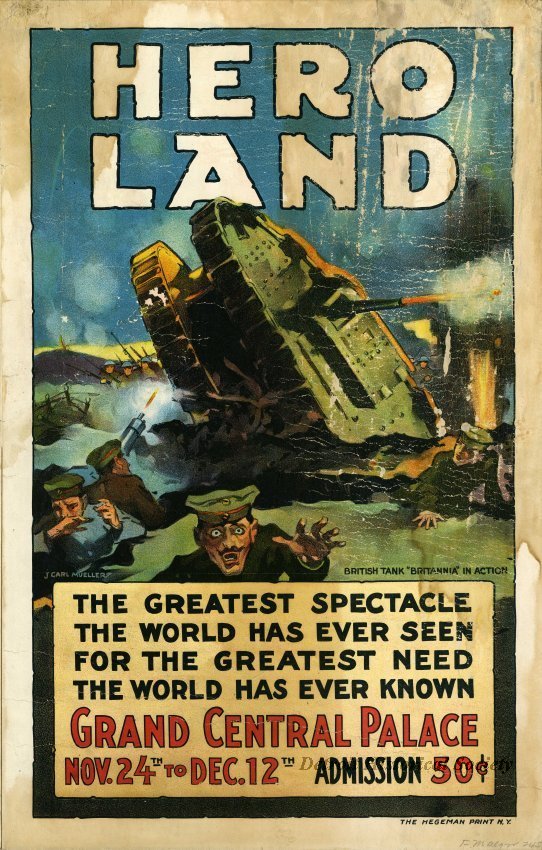Hero Land
1917 color poster printed on board and mounted on linen. Text at top reads "Hero Land." The poster prominently features an illustration showing the "British tank 'Britannia' in Action" by J. Carl Mueller. Text on the bottom third of the poster reads "The Greatest Spectacle the World Has Ever Seen for the Greatest Need the World Has Ever Known Grand Central Palace Nov. 24th to Dec. 12th Admission 50¢." Text along the bottom right reads "The Hegeman Print N.Y." Detroit Historical Society collection.
The Greatest Spectacle the World Has Ever Seen for the Greatest Need the World Has Ever Known
For 19 days in 1917, the Grand Central Palace in New York City was transformed into a military and entertainment extravaganza with the purpose of raising funds for the war effort. Titled “Hero Land,” a term used to describe France, the event’s goals were twofold, to raise awareness of the situation in Europe, and to raise money for over one hundred charitable societies including the Red Cross. Newspaper advertisements read “Hero Land is the Greatest Spectacle the World has ever seen, for the Greatest Need the World has ever seen.” The steering committee boasted the most prominent names in New York Society. The patron list included judges, elected officials, and foreign dignitaries. The British, French, Italian, and Belgian governments sent exhibitions.

1917 color poster printed on board and mounted on linen. Faded text at top reads "Hero Land / or Over the Top with Uncle Sam and His Allies / For Benefit of Dependents of Soldiers From America and for Allied War Relief." The poster prominently features an illustration of Marianne welding a sword and a shield emblazoned with an emblem of the French Republic. The illustration is signed "A. Rapeno / Paris" on the bottom right. Text on the bottom left, in white text on a black background, reads "Grand Central Palace Opening Nov. 24th" and lists honorable patrons of Hero Land. Text on the bottom right reads "The Hegeman Print N.Y." Detroit Historical Society collection.
Staged in the Grand Central Palace in New York City, the event featured recreations of “actual scenes of conditions of warfare” from the eastern and western fronts of the war, including battlefields, fortifications, camps, and fieldworks. Military focused exhibits included war relics, art created by prisoners of war interned in Switzerland, a British armored tank complete with its full crew who conducted demonstrations as to how this new instrument of war was used in modern warfare, and a reproduction of the underground trenches captured from the German army near Hindenberg. There was also a naval display where divers attached bombs to a miniature warship (which then exploded, to the delight of the crowds).

1917 World War I-era advertisement poster for Hero Land, a fundraising event for wartime relief agencies held at New York City's Grand Central Palace from November 24th until December 12th, 1917. The multicolor poster shows a drawing of an Arabian festival scene. The artist's name, "J. Carl Meuller," is shown in the lower left corner of the drawing. Small printed text near the lower right corner shows "The United States Printing & Lithograph Co., N.Y." Large text across the bottom of the poster shows "Grand Central Palace, Admission 50¢, Nov. 24th to Dec. 12th." Detroit Historical Society collection.
Society matrons designed and managed individual exhibitions, transforming much of the Grand Central Palace into a world’s fair. Entertainment included an entire floor decorated like the city of Bagdad, a grotto featuring animals and fish from Cuba, a Paris restaurant, a London chophouse, moving picture theatres, an ice-skating rink, theatrical and musical performances of all kinds, athletic exhibitions, lectures, demonstrations, and shops.
Over 250,000 people attended Hero Land, which netted over $550,000 in net profits (over $10 million in today’s dollars).


